|
|
|||
|
(Back to Preceding Week; on to Next Week) |
|
|
|
WHITE HUMMINGBIRDS 2009:
As fascinated as people are about everyday hummingbirds, aberrant hummers seem even more enthralling. Extremely early or late migrant Ruby-throated Hummingbirds always attract attention while an out-of-range western hummer coming to feeders during December snowstorms is an oxymoron that creates quite a buzz. Even more coveted, however, are breeding-season hummers that look unusual--in particular those that are pure white or almost so. We speak here of albino hummers (those that lack all pigment and bear pristine white plumage and pink eyes, feet, and bill), or what we call "leucistos" (birds with mostly white feathers but having dark eyes, feet, and bill). Nothing seems to capture a hummer enthusiast's attention like a pale, ghostly hummingbird hovering against the dark green of nature. Although we've never seen a pale hummer at Hilton Pond Center, we've banded several within South Carolina and for the past few years have been compiling reports of white hummers from around the U.S. and Canada. We've also asked folks to send photos of albinos or leucistos in their yards and this year received numerous images. The best of these we share below as our 2009 edition of "White Hummingbirds."
All text & photos © Hilton Pond Center The bird above is a full albino Ruby-throated Hummingbird that graced the yard of Bill Takacs of Chagrin Falls OH on 7 September 2009. Note the pinkish-orange bill and feet and the red eye. The lack of melanin (black) pigment in the iris allows red hemoglobin in the retina to show through--just like a "red-eye" flash photo in which a human's iris contracts and the pupil is wide open. Mr. Takacs reports "This bird came to perch on the same branch all day and would chase the normal humming birds away."
All text & photos © Hilton Pond Center Compare the full albino in the previous photo to the leucistic Ruby-throated Hummingbird just above, captured on camera by John Brandauer of Clarksburg NJ on 15 August 2009. In this bird black melanin pigment is present in eye, bill, and feet. You can even see the "subalular apterium," a featherless place at the bend of the wing that shows skin in the leucistic hummer's wing is also black. (This bald spot is present on hummingbirds with normal pigment but isn't nearly as obvious because of dark green feathers surrounding it.) This particular leucisto appears to have a lower mandible whose tip is malformed.
All text & photos © Hilton Pond Center Leucistos have a great deal of plumage variation. Some are all white while others have varying amounts of tan, gray, or brown plumage. The two-toned leucistic Ruby-throated Hummingbird above--photographed 29 August 2009 by Kathy Cloutier at Indianapolis IN--had a crown, back, tail, and wings of light brown, while its ventral side appears to be all white.
All text & photos © Hilton Pond Center By comparison, the leucistic hummer in the photo just above had a paler, calico appearance, with mottling of tan and white and a light brown bill and feet to match. This leucisto--apparently a Ruby-throated Hummingbird--was at the home of Rick & Dianne McCoy of Sherman TX on 8 September 2009.
All text & photos © Hilton Pond Center Our northernmost white hummingbird report this year came from Pastor Shane Ball of Laconia NH, who photographed his leucistic Ruby-throated Hummingbird (above) on 30 August 2009. Note the leucisto appears much larger than the normally pigmented ruby-throat at right; this is a commonly reported occurrence with white hummers but in most cases is probably an optical illusion.
All text & photos © Hilton Pond Center The most unusually patterned hummer reported this year was a half-white, half-normal apparent Anna's Hummingbird (above) photographed by Lee Ann Raddatz at San Diego CA. The bird was present at least 1 September through 4 October 2009; many white hummers stay only a day or two. Because it has some normal green feathers, this hummingbird is referred to as being "pied" rather than leucistic. Note the bill appears bright pinkish-orange--a condition usually associated only with full albinos. Lee Ann reports "This hummer only came to the feeder when the majority of the others had finished eating. It never was aggressive as many can be and around noon seemed to be its favorite time to eat."
All text & photos © Hilton Pond Center And speaking of full albinos, Freeman Cole photographed a completely unpigmented Ruby-throated Hummingbird on 19 September 2009 at Camden TN. The feet and bill are pale and the subalular apterium appears as a pink blur at the bend of the wing. (The white spot in the otherwise pink eye is an artifact of flash photography.)
All text & photos © Hilton Pond Center Chuck & Connie Clark of Arroll MO submitted the above photo of a defensive Ruby-throated Hummingbird leucisto, seen on 19 September 2009. We often hear that white hummers chase off other "normal" conspecifics but doubt they are any more agressive--just more obvious in their actions. Also of interest in this image are the leucistic bird's lighter tail tips--identical to the white tip pattern on the normally pigmented ruby-throat it is defending against. (WARNING: White tail tips on autumn RTHU are NOT a reliable indicator of a bird's sex; that's because all females have other tail feathers tipped in white, but so do immature males!)
All text & photos © Hilton Pond Center Correspondents often report their white hummingbirds have plumage with a pinkish tinge, but this is almost always a reflection from red plastic on feeders--as in the apparent Ruby-throated Hummingbird leucisto above. It was photographed by Elaine K. of Kingwood TX on 28 September 2009.
All text & photos © Hilton Pond Center The sharpest photo submitted this year was the one above taken by Ron Basham and sent by Adam Walker, who hosted his leucistic Ruby-throated Hummingbird at Shreveport LA for several days around 25 September 2009. The bird has hints of tan and gray on otherwise white plumage, and the bill and feet are dark brown rather than black.
All text & photos © Hilton Pond Center In frontal view, it's obvious Mr. Walker's leucisto is an immature male Ruby-throated Hummingbird just beginning to get his dark throat. We couldn't tell from the photo whether these gorget feathers were iridescent red like a normal male ruby-throat's, but we're guessing they were at least metallic in appearance. After all, iridescent feathers get their "color" from tiny grooves and air bubbles--not from pigment--and iridescence should be unaffected by lack of melanin. (By the way, based on personal experience we'd say this particular bird is unusual because it's a male; the great majority of white hummers we encounter are female.) That the hummer in the photo above has a partial gorget is absolute proof of his age: He HAD to have hatched in 2009. That being the case, it's alarming this leucistic bird's tail feathers are already heavily worn. Such wear also occurs in white tail tips of "normal" Ruby-throated Hummingbirds, but it seldom affects their wing feathers. That's because melanin is a structural pigment that actually ADDS strength to feathers. Thus, an albinistic or leucistic hummingbird's unpigmented wing feathers are likely to suffer from just as much wear as the tail feathers in the photo above--not a good scenario for a bird that needs undamaged wings to fly up to 2,000 miles to the Neotropics. We speculate these "defective" birds simply don't complete the migratory route, their white wings wearing out long before they get close to wintering grounds in Mexico or Central America. But that's the way nature works, with aberrant hummingbirds such as albinos, leucistos, and pieds succumbing to their deficiencies while normal individuals survive to pass their genes to offspring in the next generation. Some of those youngsters invariably turn out to be albinos, leucistos, or pieds--of which we hope to get a few photos next year for our 2010 edition of "White Hummingbirds."
All text & photos © Hilton Pond Center Thanks to everyone who submitted reports & photos of white hummingbirds.
Comments or questions about this week's installment?
Thanks to the following fine folks for recent gifts in support of Hilton Pond Center for Piedmont Natural History and/or Operation RubyThroat: The Hummingbird Project. Your tax-deductible contributions allow us to continue writing, photographing, and sharing "This Week at Hilton Pond." (Please see Support if you'd like to make a gift of your own. You can also contribute by ordering an Operation RubyThroat T-shirt.)
Using Network for Good via Facebook's "Causes," 12 people have made contributions to "Help the Hummingbirds" in honor of Bill Hilton Jr.'s 63rd birthday and bringing the total to $519--short of the $1,260 goal but nice nonetheless. Even though 15 September 2009 has come and gone, you can still donate to this birthday cause by going to Facebook. Contributing this week was:
"This Week at Hilton Pond" is written & photographed You may wish to consult our Index of all nature topics covered since February 2000. You can also use our on-line Hilton Pond Search Engine at the bottom of this page. For a free, non-fattening, on-line subscription to |
|
Make direct donations on-line via
Network for Good: |
|
|
Use your PayPal account
to make direct donations: |
|
|
If you like to shop on-line please become a member of iGive, through which more than 750 on-line stores from Amazon to Barnes & Noble, L.L. Bean to Lands' End--and even iTunes!--will donate a percentage of your purchase price in support of Hilton Pond Center and Operation RubyThroat. For every new member who signs up and makes an on-line purchase iGive will donate an ADDITIONAL $5 to the Center. You can even do Web searches through iGive and earn a penny per search for the cause! Please enroll by going to the iGive Web site; more than 200 members have signed up to help. It's a painless, important way for YOU to support our on-going work in conservation, education, and research. By the way, if you add the iGive Toolbar to your browser and register Operation RubyThroat as your preferred charity, it'll be even easier to help Hilton Pond when you shop. |
|
|
SPECIES BANDED THIS WEEK: * = New species for 2009 WEEKLY BANDING TOTAL 5 species 9 individuals YEARLY BANDING TOTAL (2009) 55 species 1,599 individuals 28-YEAR BANDING GRAND TOTAL (since 28 June 1982, during which time 170 species have been observed on or over the property) 124 species 53,481 individuals NOTABLE RECAPTURES THIS WEEK (with original banding date, sex, and current age) NONE THIS WEEK This Week at Hilton Pond
NOW is the time to report your RTHU fall departure dates from the U.S. & Canada, and fall arrival dates for Mexico & Central America. Please participate. All text & photos © Hilton Pond Center
|
OTHER NATURE NOTES OF INTEREST
--Wood Ducks have been assembling on Hilton Pond the past few weeks. On 19 Oct there were at least four males (above) and four females; some appear to be established pairs.
--Hilton Pond Center's lone Schweinitz's Sunflower specimen (above) flowered profusely this fall--a relief after deer browsed its stems to the ground in 2008. This year the rhizome produced SIX main stems, twice as many as two years ago. To our knowledge, the flowers on our solitary plant have never produced seed. Schweinitz's Sunflower--a remnant from the big Piedmont Prairie that until a few hundred years ago covered counties surrounding Mecklenburg NC--is a federally endangered species that these days grows almost exclusively along highways. A prime patch not far from the Center was eradicated last year by workers who sprayed indiscriminately beneath a roadside power line. More info at Schweinitz's Sunflower Recovery. --Several days of rain and restroom renovations at our old farmhouse limited us to just one netting day this week at Hilton Pond Center. Of particular interest was the first White-throated Sparrow of the fall, and we've had no Ruby-throated Hummingbirds since 8 Oct. Looks like winter is on the way. Again. --To view our previous annual galleries of "White Hummingbirds," please see 2007 and 2008. There are also photo essays on Banding the Albino Hummingbird, This Time, It's Leucistic, and Great White Hummingbird.
|
|
|
|
(Back to Preceding Week; on to Next Week) Up to Top of Page Back to This Week at Hilton Pond Center Current Weather Conditions at Hilton Pond Center |
 You can also post questions for The Piedmont Naturalist |
Join the |
Search Engine for |
|
|
Apple.com Online Discount

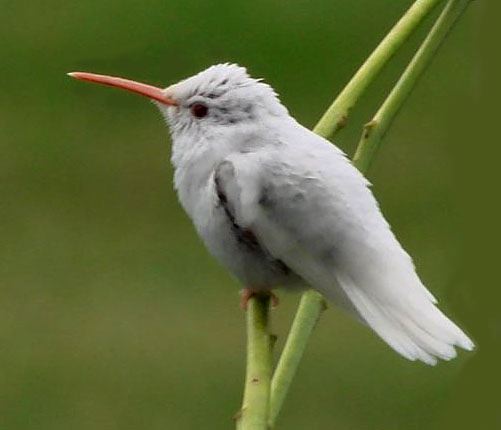
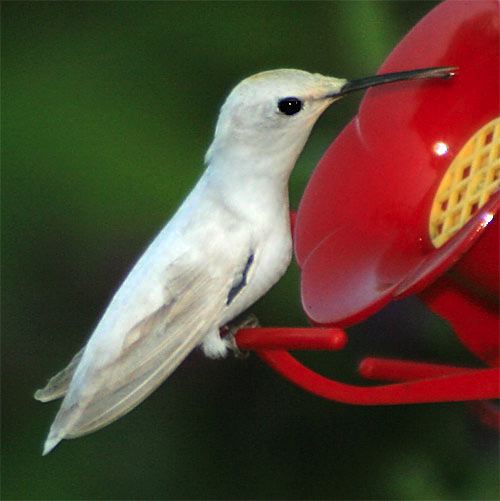

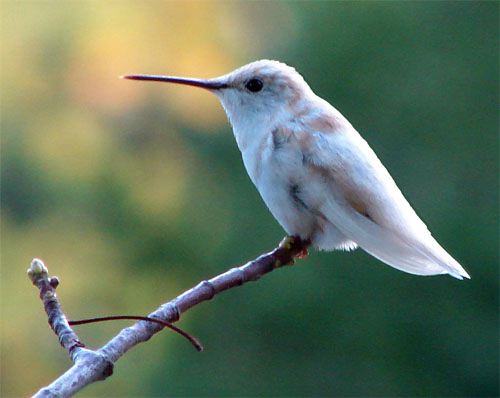




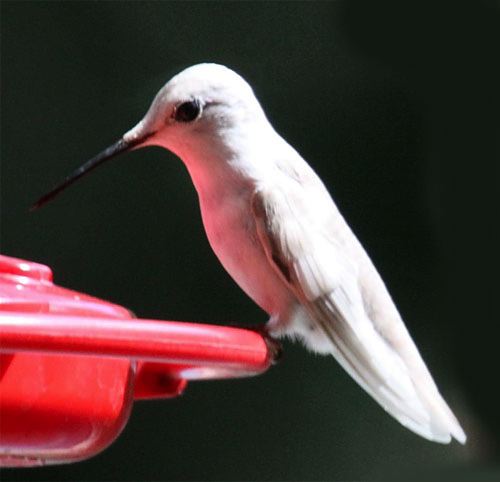
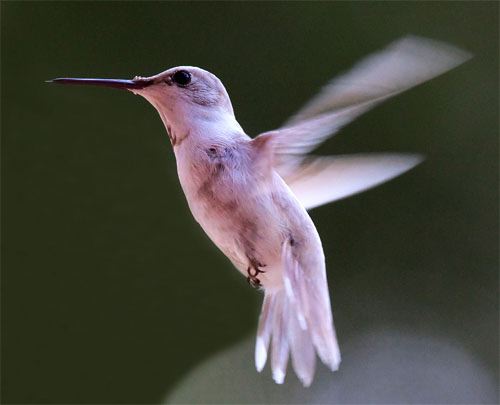

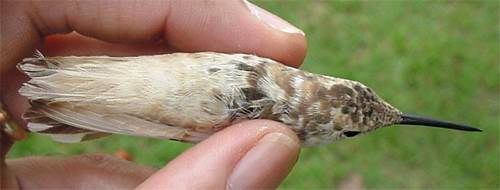



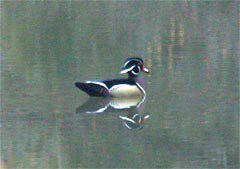
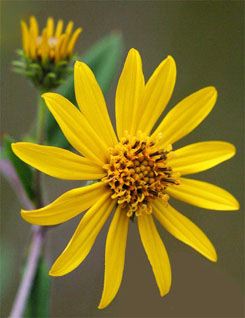
 Please report your
Please report your